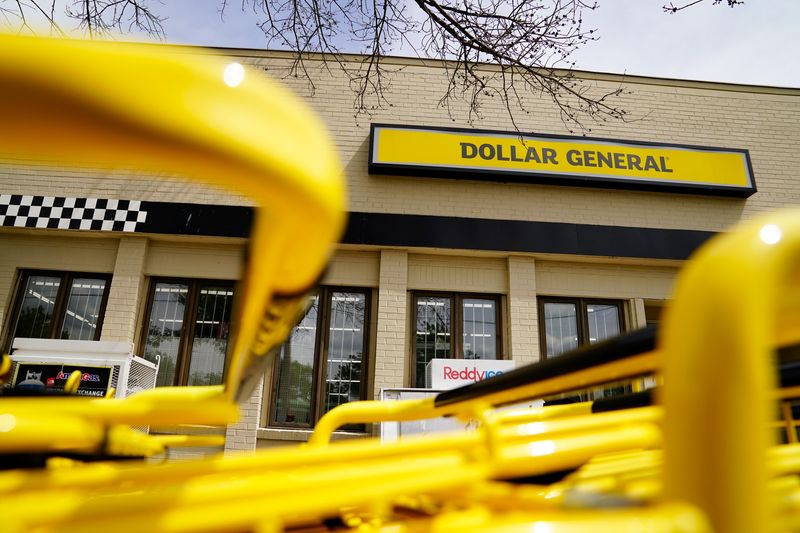Dollar General posts upbeat first quarter on demand for pocket friendly groceries
2024.05.30 08:41
By Granth Vanaik
(Reuters) -Dollar General beat estimates for first-quarter same-store sales and profit on Thursday, as more Americans flocked to its stores for affordable groceries and essentials at a time when sticky inflation pressured household budgets.
The company has been focusing on selling relevant merchandise, having more employees at stores and expanding private-label brands, as it looks to attract consumers amid stiff competition from rivals Walmart (NYSE:), Target and Chinese e-commerce platform Temu.
“These results were driven by strong customer traffic growth and market share gains during the quarter,” said CEO Todd Vasos.
Visits to Dollar General (NYSE:) were up 12.6% year-over-year in the first quarter, according to data analytics firm Placer.ai.
Quarterly results from bellwether Walmart earlier in May also indicated that U.S. shoppers are still resilient, even as rival Target cautioned about customers delaying purchases.
“These results were pretty consistent to what we’ve been seeing throughout the retail industry,” said CFRA Research’s Arun Sundaram.
Dollar General’s same-store sales rose 2.4% for the quarter, compared with LSEG estimates of a 1.61% increase.
Shares of the company, however, pared some of their premarket gains, last up 2.7%, after what analysts said were “softer-than-expected” second-quarter projections.
The company expects same-store sales for the second quarter to increase in the low 2% range versus analysts’ expectation of 2.25% growth. It forecasts profit to be between $1.70 and $1.85 per share, compared with estimates of $1.92.
“Dollar General is still pretty early on its turnaround strategy … it’s going to take at least a few more quarters before we see strong top and bottom line growth,” Sundaram said.

The company posted per-share profit of $1.65 for the first quarter, compared with expectations of $1.57.
It reported gross profit as a percentage of net sales at 30.2%, down from 31.6% a year earlier, hurt by higher markdowns and an increase in retail shrink, where inventory is lost or damaged due to theft or breakage.








